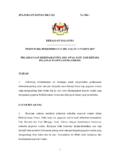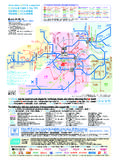Transcription of 200Policy Brief - OECD.org
1 OECD 2008 ORGANISATION FOR ECONOMIC CO-OPERATION AND DEVELOPMENT Policy BriefJANUARY 2008 Ten Steps to Equity in EducationIntroductionEducation plays a key role in determining how you spend your adult life a higher level of education means higher earnings, better health, and a longer life. By the same token, the long-term social and financial costs of educational failure are high. Those without the skills to participate socially and economically generate higher costs for health, income support, child welfare and social security a fair and inclusive system that makes the advantages of education available to all is one of the most powerful levers to make society more equitable. Education has expanded significantly in the past half-century, but hopes that this would automatically bring about a fairer society have been only partly realised.
2 Women have made dramatic advances, but overall social mobility has not risen and in some places inequalities of income and wealth have ever more students go on to university or professional education, many are still being left behind. Across OECD countries nearly one in three adults have only primary or lower secondary education a real disadvantage in terms of employment and life the same time, increased migration poses new challenges for social cohesion in some countries while other countries face longstanding issues of integrating minorities. Fair and inclusive education for migrants and minorities is a key to these challenges. Equity in education enhances social cohesion and Policy Brief looks at how to improve equity in education in three key policy domains: the design of education systems, practices both in and out of school, and resourcing.
3 It proposes ten steps which would help reduce school failure and dropout rates, make society fairer and help avoid the large social costs of marginalised adults with few basic skills. What are the challenges for equity in education?How to improve the design of education systems?How to improve practices in and out of the classroom?How to improve resourcing for equity in education?For further informationFor further readingWhere to contact us?2 OECD 2008 Policy BriefTEN STEPS TO EQUITY IN EDUCATIONE quity in education has two dimensions. The first is fairness, which basically means making sure that personal and social circumstances for example gender, socio-economic status or ethnic origin should not be an obstacle to achieving educational second is inclusion, in other words ensuring a basic minimum standard of education for all for example that everyone should be able to read, write and do simple arithmetic.
4 The two dimensions are closely intertwined: tackling school failure helps to overcome the effects of social deprivation which often causes school equity and fairness are issues for OECD countries. Children from poorer homes in most OECD countries are between three and four times more likely to be among the poorest scorers in mathematics at age 15 (see Figure 1).And when it comes to inclusion, many students in OECD countries struggle with reading and risk, leaving school without basic skills for work and life in the 21st century. Significantly, there are big differences between countries (see Figure 2).Achieving the necessary reading and mathematical skills is often especially difficult for migrants and minorities, who often lose out on both fronts lower performance and low socio-economic background.
5 Approaches to overcoming these hurdles include strengthening early childhood education and care, not streaming immigrants into special education, improving language training and strengthening teachers professional development to deal with multiculturalism. Measures to reduce discrimination in the labour market can also increase incentives for immigrants to obtain a good key policy areas can affect equity in education: the design of education systems, practices in and out of school, and how resources are allocated. The OECD has developed ten practical steps that governments can take in these three areas to enhance equity in education. What are the challenges for equity in education?FIGURE 1. HOW SOCIAL BACKGROUND AFFECTS PERFORMANCE IN MATHEMATICSR elative chances of students in lowest and highest socio-economic group ending up with very poor (below or at Level 1) performance in mathematics (2003)0123456 Likelihood of st udents with th e lowest SE S to be lowest maths pe rf or me rs when compared to st udents with high SE SIc elandTu rkeyCanadaJapanGr eeceFinlandNo rwaySw edenSpainPo rtugal1It alyAustriaPolandAust raliaLuxembourgKo reaNew ZealandIr elandNetherlandsUn ited Stat esSwitz er landMexicoDenmarkCzech RepublicFranceGermanyHungarySlovak RepublicBelg iumOdds rati o1.
6 For example, in Portugal, a student with low SES is three times more likely to be a low mathematics achiever than a student with high : OECD (2006), Education at a Glance: OECD Indicators 2006, OECD, Paris. OECD 2008 3 TEN STEPS TO EQUITY IN EDUCATION Policy BriefThe basic structure of education systems affects equity. Traditionally, education systems have sorted students according to attainment. Evidence from studies of secondary and primary schools suggests that such sorting can increase inequalities and inequities, particularly if it takes place early in the education process. Early sorting can also weaken results overall. This prompts two conclusions: early tracking and streaming need to be justified in terms of proven benefits; and school systems using early tracking should postpone it to a later stage to reduce inequities and improve socio-economic structure of education systems is also important.
7 Secondary school systems where there are large socio-economic differences between schools tend on average to have worse results in mathematics and reading and a greater spread of reading outcomes. Indeed, social background is more of an obstacle to educational success than in systems without such socio-economic differences between pupils on the basis of academic achievement tends to create great social differences between schools. It also increases the link between socio-economic status and performance it tends to accelerate the progress of those who have already gained the best start in life from their parents and is also associated with stronger performance at the top end of the scale in mathematics and science. So academic selection needs to be used with caution because of the risks it poses to often allow parents a choice of schools, partly in the interests of equity.
8 But this may in fact increase the risk of inequity because better-educated parents make better-informed choices. In many OECD countries, greater choice in school systems is associated with larger differences in the social composition of conclusion is that school choice requires careful management from an equity perspective, particularly to ensure that it does not result in increased differences in the social composition of schools. Popular schools are likely to be How to improve the design of education systems?FIGURE 2. HOW MANY STUDENTS STRUGGLE WITH READING1 Percentage of students below and at Level 1 of proficiency in the OECD PISA reading scale2 (2003)0102030405060 Belo w Leve l 1 (bel ow 33 5 scor e point s)Level 1 (fro m 33 5 to 40 7 scor e point s)%Fi nlandKo reaCanadaIrelandNetherlandsAustraliaSw edenNew ZealandDenmarkSwitzerlandPolandFranceBel giumNo rw ayIcelandJapanCzech RepublicUnited StatesHungaryAustriaSpainPo rtugalGermanyLuxembourgIt alySlovak RepublicGr eeceRu ss ian Fede rationTurkeyMexico1.
9 Countries are ranked in descending order of percentage of 15-year-olds in Levels 2, 3, 4, 5, and The PISA scale has six levels of proficiency. Level 2 represents the baseline at which students begin having skills that allow them to use reading actively. Level 1 and below imply insufficient reading skills to function in today s : OECD (2004), Learning for Tomorrow s World: First Results from PISA 2003, OECD, OECD 2008 Policy BriefTEN STEPS TO EQUITY IN EDUCATION oversubscribed, and need ways to ensure an even social mix. This could include selection methods such as lottery arrangements. Financial premiums to schools attracting disadvantaged pupils may also struggling within the system face a further risk as they get into the final years of compulsory education lack of future choice, and a high risk of dropping out altogether.
10 Between 5% and 40% of students drop out of school in OECD countries, finishing with low skills and high rates of unemployment. The reasons for dropping out include disenchantment with school, lack of support at home, negative learning experiences and having to repeat years because of poor best cure is to stave off the risk of dropout as early as possible. Basic schooling should support and engage those who struggle at school as well as those who way of improving performance and preventing dropout is to identify at-risk students early and take action quickly. This means monitoring information on attendance, performance and involvement in school activities, and having a concrete response to improve outcomes and prevent dropout. Upper secondary education needs to be attractive not just to an academically-inclined elite, but also to offer good quality pathways without dead ends and effective links to the world of work.
















